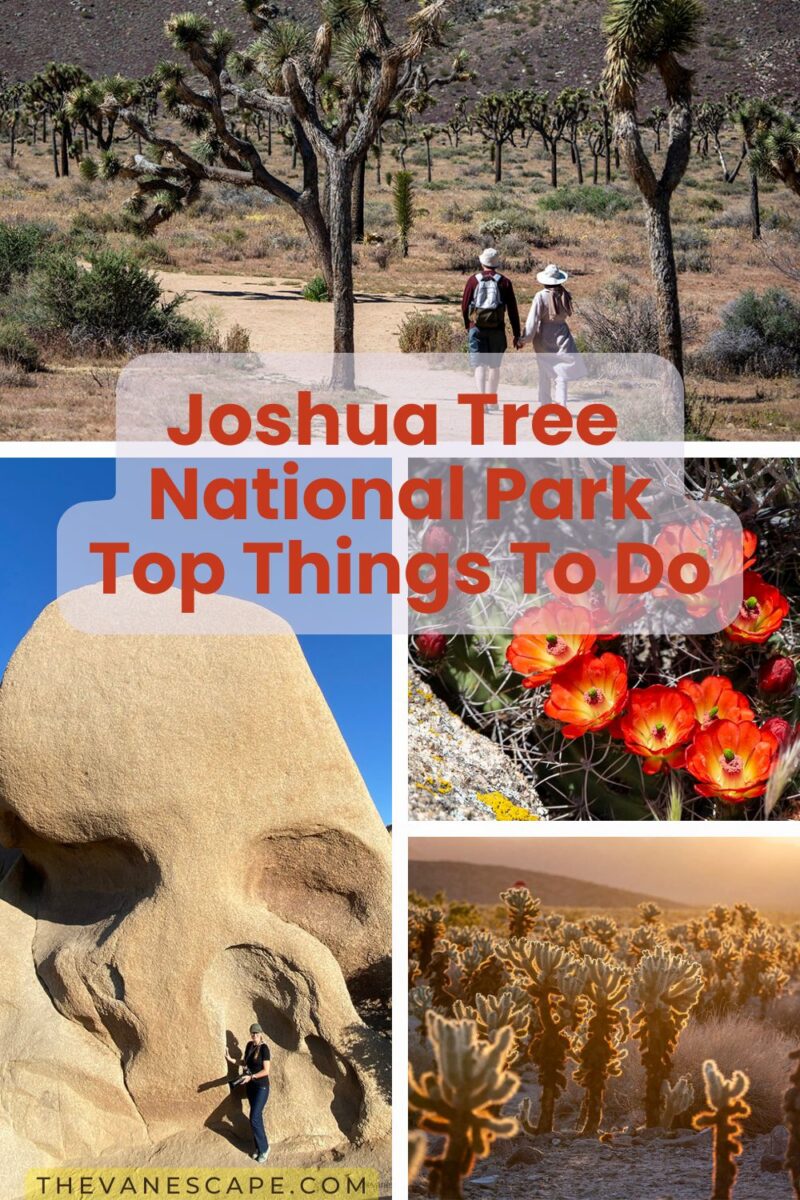Things To Do in Joshua Tree National Park: Activities and Spots
Planning a trip to Joshua Tree National Park and wondering what the best activities and sights are? Our guide based on first-hand experiences has you covered. Joshua Tree has iconic landscapes, from towering rock formations to the famous Joshua trees. Whether you’re looking for easy hikes, scenic drives, or rock climbing spots, there’s something for everyone here. With so many options, it can be tough to know where to start. That’s why we’ve put together the best things to do and see in the park. Get ready for an unforgettable desert adventure!
This article may contain affiliate / compensated links. For full information, please see our disclaimer here.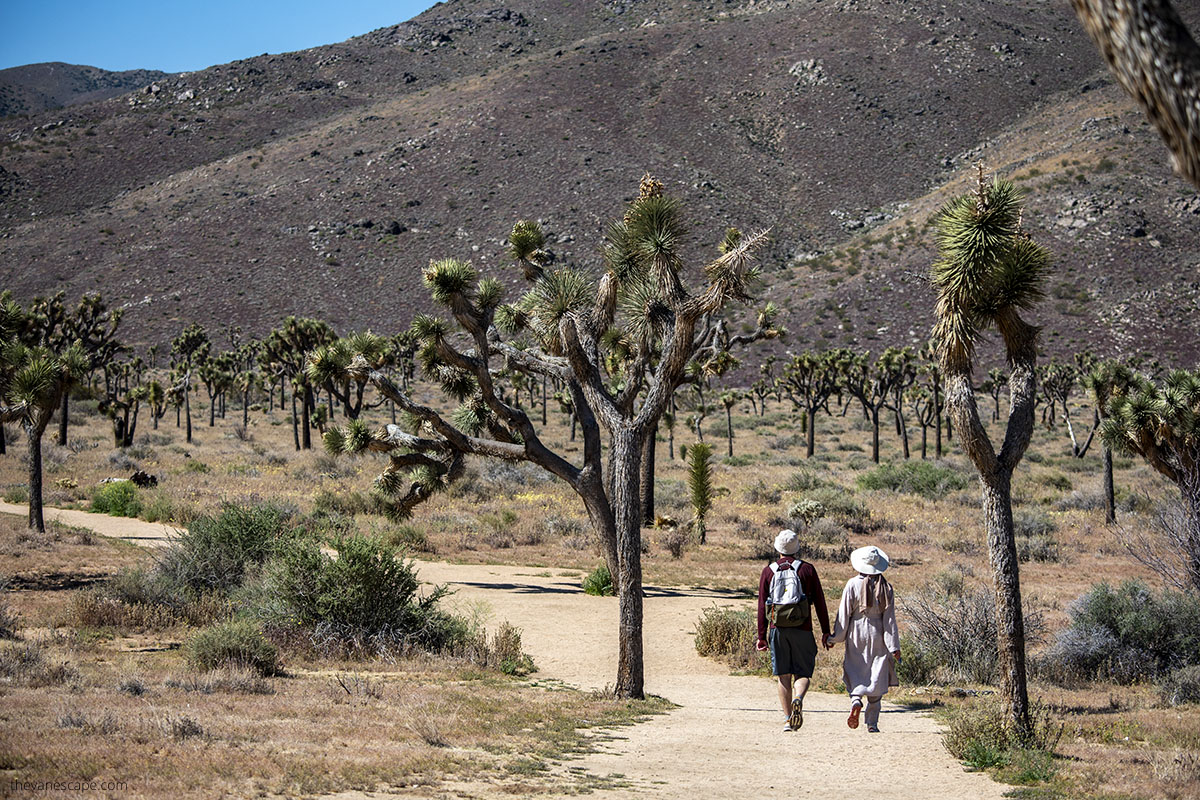
Activities in Joshua Tree: Our Experiences
Joshua Tree National Park is a stunning desert landscape where the Mojave and Colorado deserts converge. This Californian park is known for its unique Joshua trees, dramatic rock formations, and wide-open skies.
Chris and I have explored Joshua Tree many times, and it’s a place we truly love, especially during spring when the cacti are in full bloom. The vibrant colors of the desert flowers against the rugged backdrop make it a photographer’s dream.
Visiting Joshua Tree is more than just a trip; it’s an experience that offers something for everyone. Whether you’re into camping in Joshua under the stars, hiking through serene trails, or catching the first light of day at the Cholla Cactus Garden, the park never disappoints.
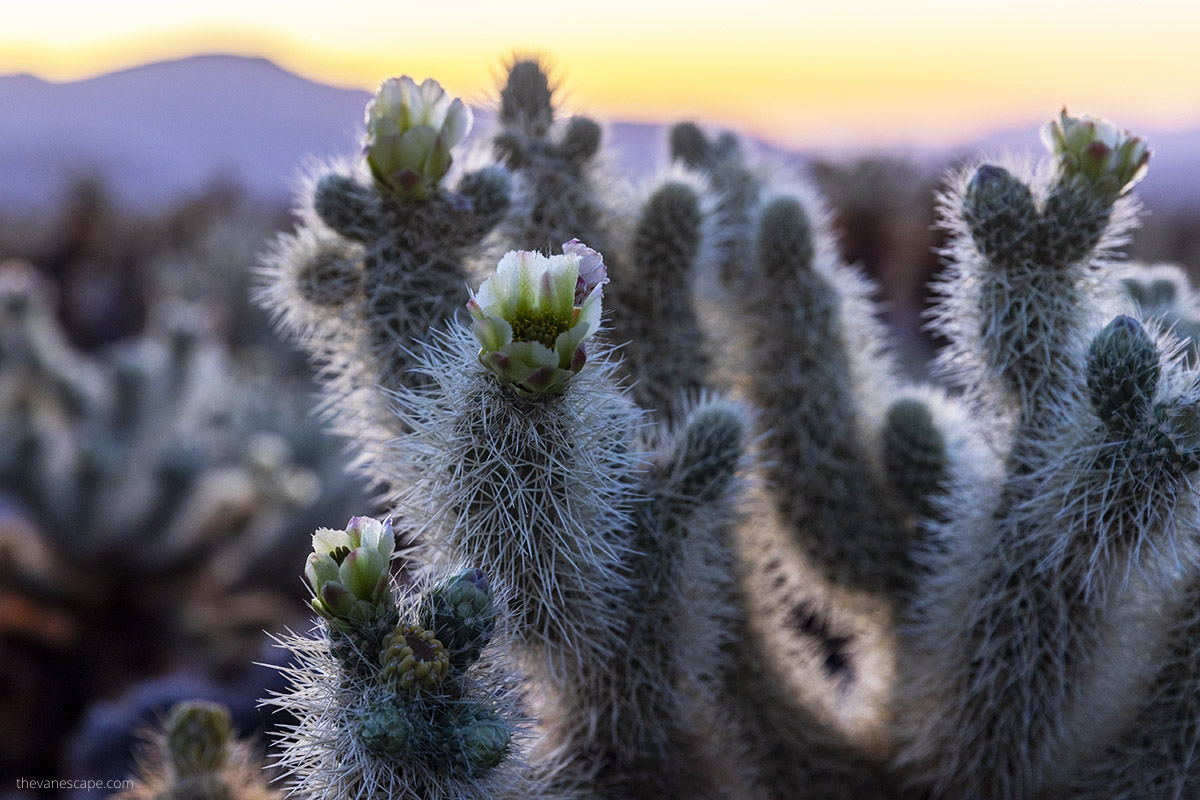
We’ve spent countless days exploring its trails, admiring blooming desert flowers, enjoying quiet moments at sunrise, and even visiting the iconic Pioneer Town. Depending on your interests, you can pick the activities that suit you best, and we’re here to share our firsthand tips to help you make the most of your visit.
Tip: If you plan your trip, make sure to have a look at our detailed article: Tips for Visiting Joshua Tree National Park and How to Plan a Perfect Trip. And if you plan camping, check out the best campgrounds in Joshua Tree. Also, make sure to visit the official park website to check current conditions.
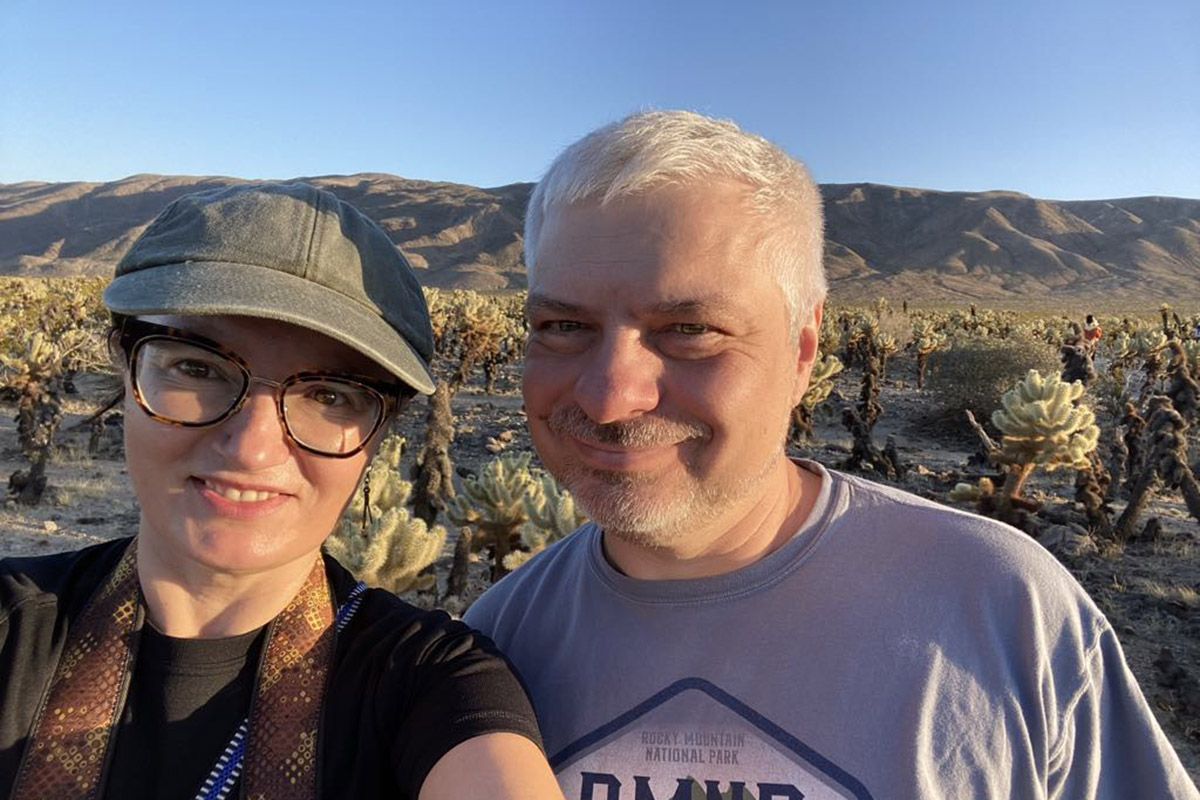
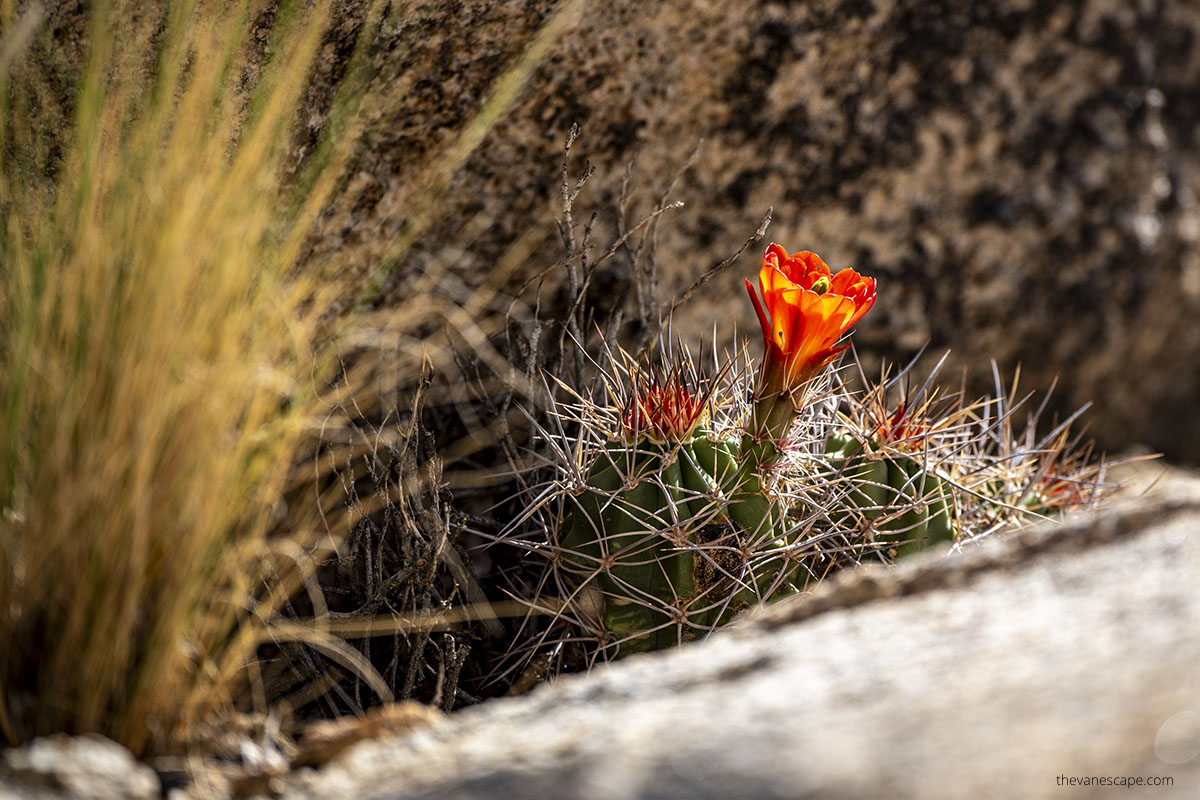
Top Attractions in Joshua Tree National Park
Joshua Tree National Park is packed with incredible sights and experiences. Whether you’re looking for iconic rock formations, panoramic views, or serene desert spots, these top attractions should be on your must-see list.
Each attraction showcases a different aspect of Joshua Tree’s unique desert environment. Depending on your interests, you can choose the spots that resonate with you most. Whether you’re a hiker, a photographer, or simply looking to enjoy the natural beauty, these top attractions offer a bit of everything.
Skull Rock
Skull Rock is one of the park’s most recognizable features. This large boulder, shaped like a skull, is right off the main road, making it an easy stop. You can explore the surrounding area on foot, where you’ll find plenty of opportunities for rock scrambling and photography. It’s a great spot to see the unique rock formations that make Joshua Tree famous.
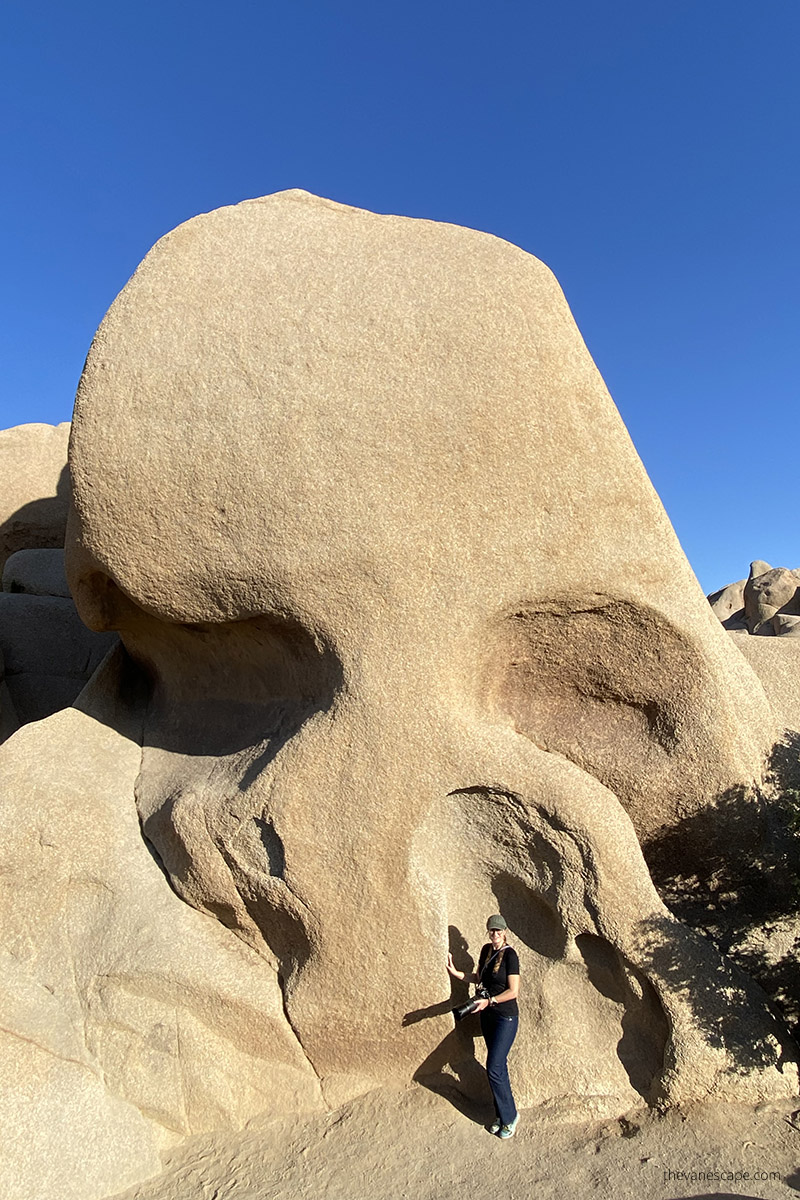
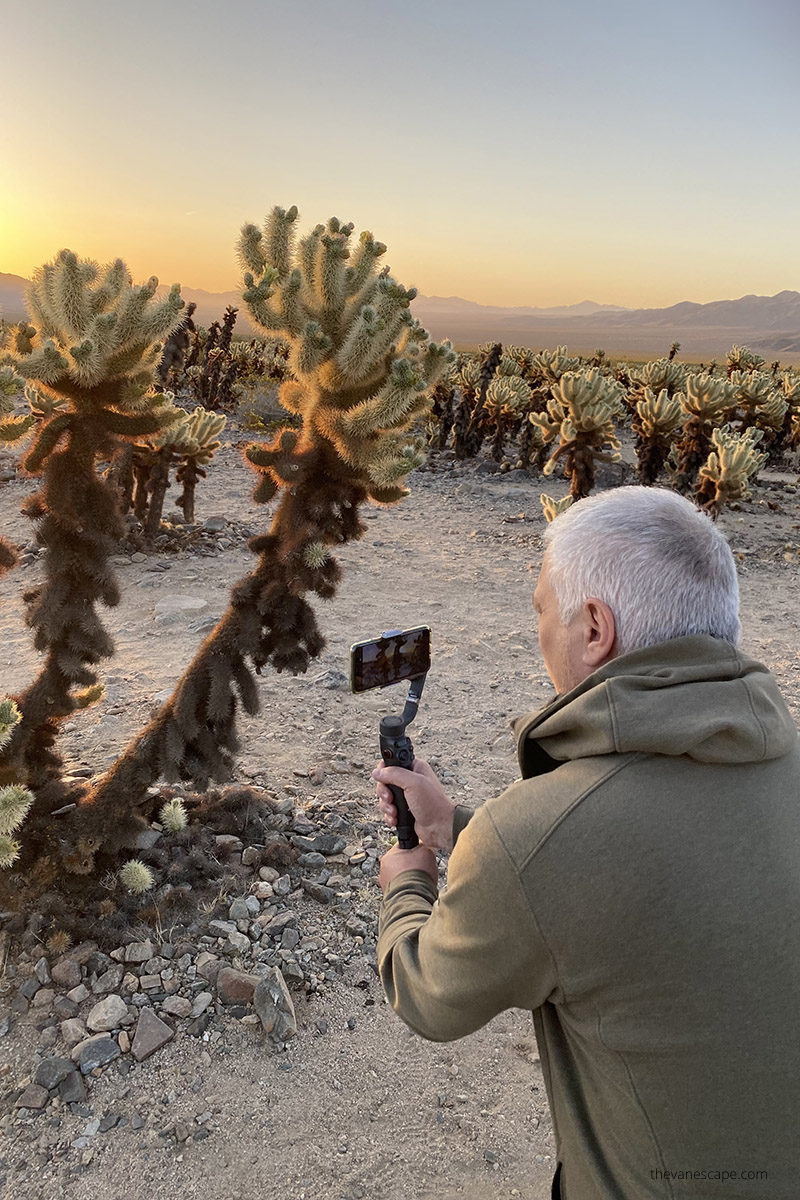
Cholla Cactus Garden
The Cholla Cactus Garden is a must-visit, especially during sunrise or sunset when the light makes the cacti glow. This short, easy trail winds through a dense concentration of cholla cacti, creating a surreal landscape. It’s a perfect spot for a peaceful walk and some amazing photos.
Tip: If you like cacti, check out our article about top activities in Saguaro National Park.
Keys View
For breathtaking panoramic views, head to Keys View. This viewpoint offers a sweeping vista of the Coachella Valley, the San Andreas Fault, and on clear days, even Mexico. It’s an ideal spot to catch a desert sunset or simply take in the vastness of the landscape.
Barker Dam
Barker Dam offers a mix of history and nature. This easy loop trail takes you to a historic water tank built by early cattle ranchers, now a haven for birds and other wildlife. Depending on the time of year, you might see water in the dam, which is a rare and beautiful sight in the desert.
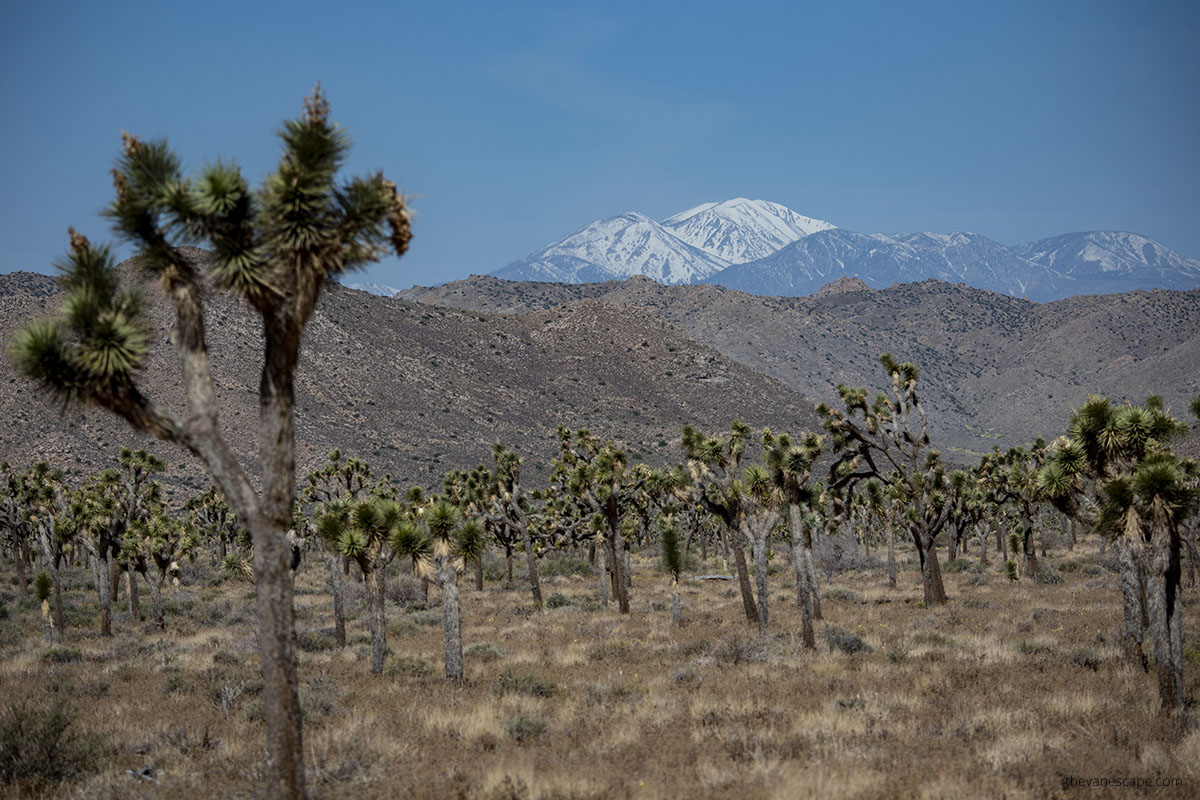
Ryan Mountain
If you’re up for a bit more of a challenge, the hike up Ryan Mountain is worth the effort. This moderately strenuous trail offers some of the best views in the park from its summit, including a 360-degree panorama of the desert and distant mountain ranges. It’s one of the highest points in the park, making it a favorite for sunrise and sunset hikes.
Tip: If you like desert environments, you might also be interested in exploring Monument Valley and Death Valley National Park.
Keys Ranch
For a glimpse into the park’s past, take a ranger-guided tour of Keys Ranch. This historic site was once home to a pioneering family who lived off the land in this harsh desert environment. The tour provides fascinating insights into the challenges and ingenuity of early settlers.
Hidden Valley
Hidden Valley is a gem in Joshua Tree, offering an easy hike that loops through a stunning, secluded area surrounded by massive boulders. This spot is perfect for families or anyone looking for a short, scenic walk. The valley is also a hotspot for rock climbers, thanks to its accessible rock walls.
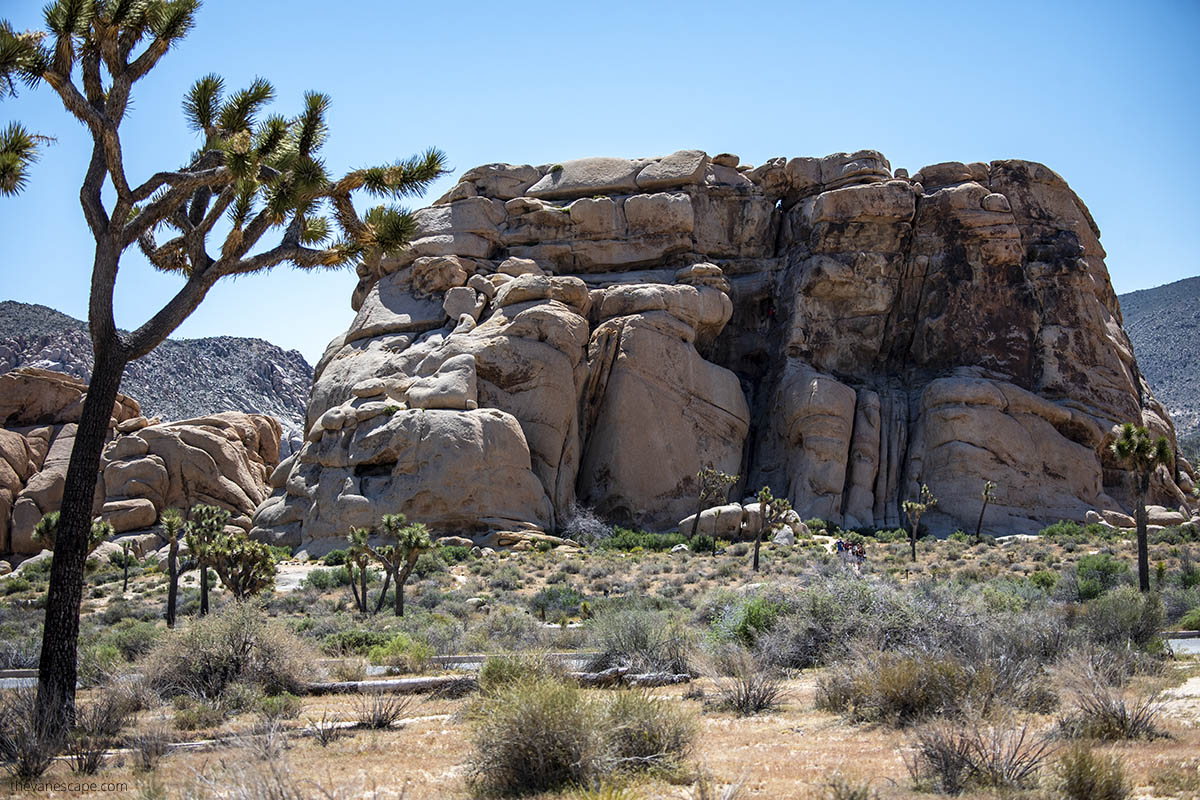
Hiking Adventures in Joshua Tree
One of the top things to do in Joshua Tree National Park is hiking. The park offers a diverse range of trails that cater to all levels, from easy strolls to challenging climbs. Each hike provides a unique experience, showcasing the park’s stunning landscapes, from rugged mountains to hidden oases.
Ryan Mountain
Ryan Mountain is a must-do hike in the park. This 3-mile round trip trail takes you to the summit of Ryan Mountain, offering some of the best views in the park. The hike is moderately strenuous, with a 1,000-foot elevation gain, but the panoramic views at the top make it worth the effort.
Tip: Start early to avoid the heat and enjoy the sunrise from the summit. Check out the trailhead location.
Barker Dam Trail
Barker Dam Trail is a short, easy hike that combines history and nature. The 1.3-mile loop takes you to a historic dam built by early cattle ranchers. The trail winds through Joshua trees, massive boulders, and, depending on the season, a small reservoir that attracts local wildlife.
Tip: Keep an eye out for ancient petroglyphs near the dam, offering a glimpse into the area’s past. Check out the trailhead location.
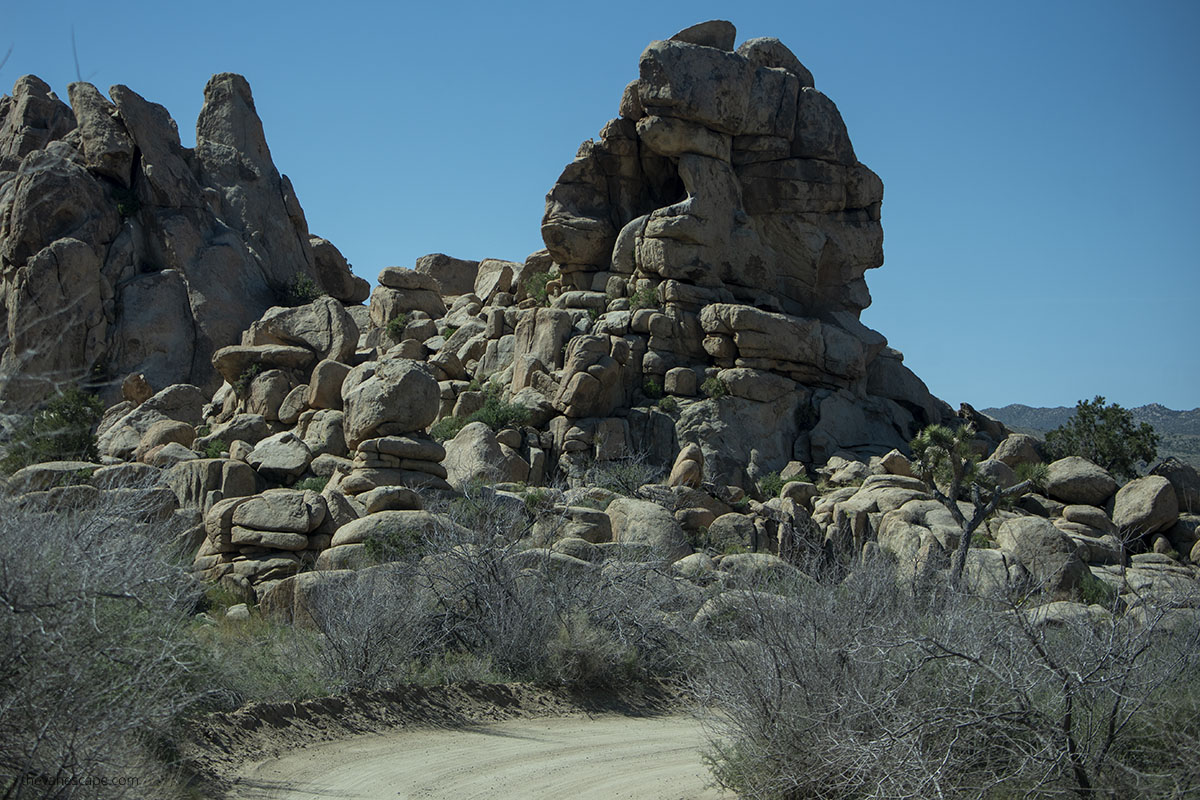
Hidden Valley
Hidden Valley is another popular trail in Joshua Tree. This 1-mile loop is surrounded by towering boulders and is a favorite spot for both hikers and rock climbers. The valley is also rich in plant life, providing a vibrant contrast to the desert landscape.
Tip: Visit in the late afternoon when the light is perfect for photography. Check out trailhead.
Lost Palms Oasis
For those looking for a longer hike, Lost Palms Oasis offers a 7.5-mile round trip to one of the park’s most secluded oases. The trail is moderately challenging, with rocky sections and a 500-foot elevation gain. The reward is a cool, shaded oasis filled with towering fan palms.
Tip: Carry plenty of water and take breaks in the shade to avoid overheating.
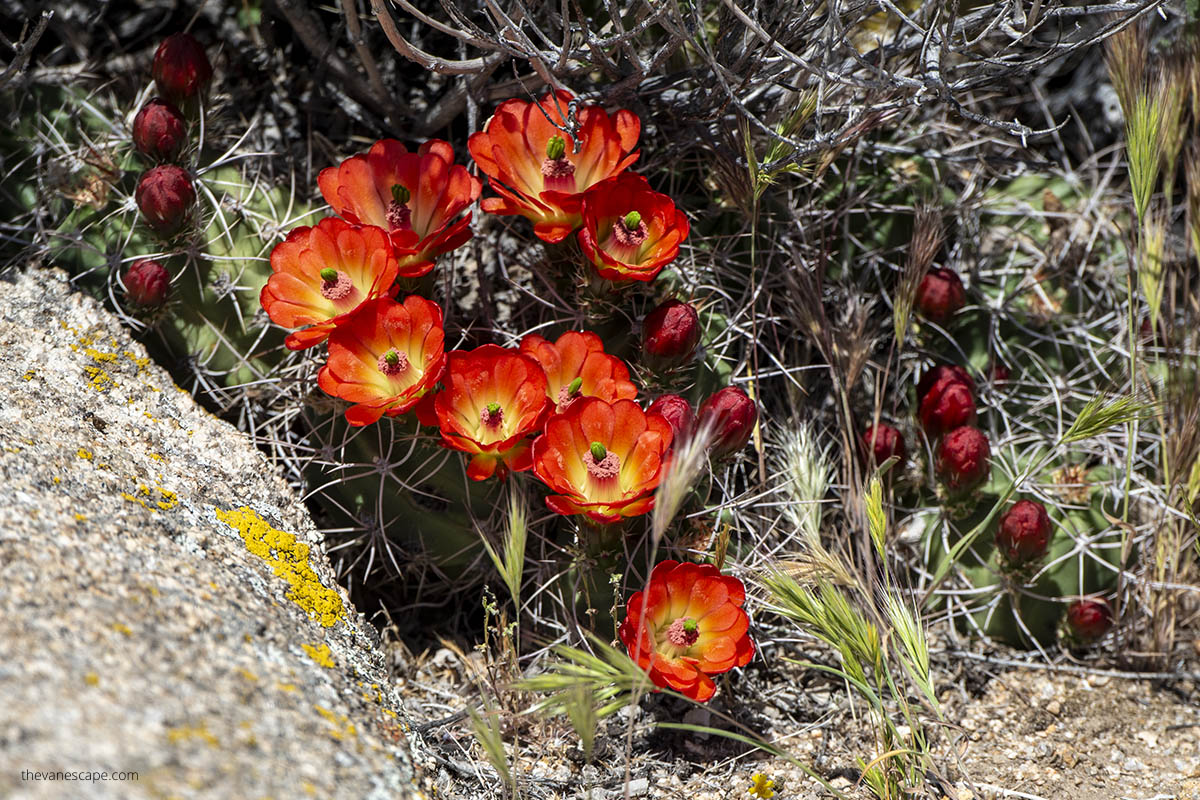
Fortynine Palms Oasis
Fortynine Palms Oasis is a 3-mile round trip hike that takes you over a ridge to a beautiful, shaded oasis. The trail is moderately challenging but offers a peaceful retreat at the end, making it a perfect spot for a rest before heading back.
Tip: This trail is quieter than some of the more popular hikes, providing a more tranquil experience.
Boy Scout Trail
For a full-day adventure, the Boy Scout Trail offers a 16-mile round trip through some of the park’s most diverse landscapes. The trail passes through Joshua tree forests, rocky canyons, and open desert, providing a true backcountry experience.
Tip: Consider doing this hike as a point-to-point trail with a shuttle, especially if you’re looking to avoid retracing your steps. Check out trailhead and details.
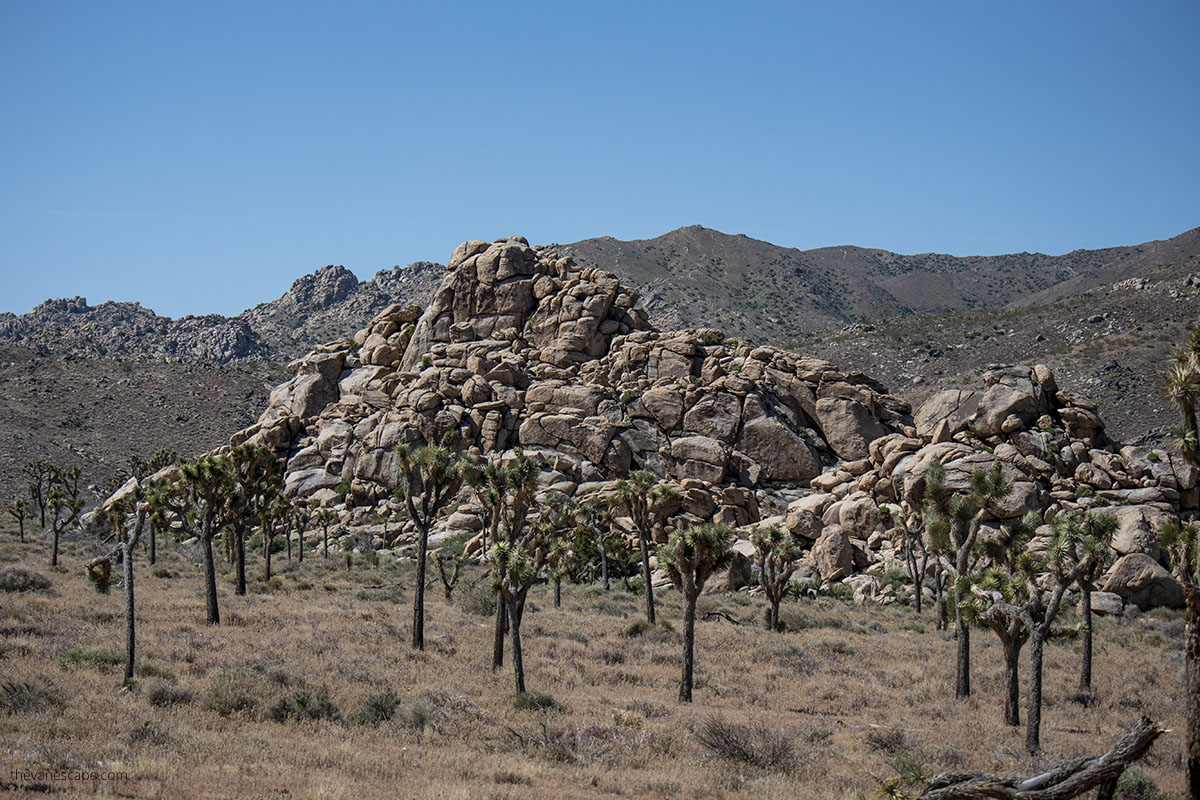
Unique Activities in Joshua Tree
Joshua Tree National Park offers a range of unique activities that make it stand out from other national parks. Whether you’re interested in stargazing, rock climbing, or exploring historical sites, there’s something special here for everyone.
Stargazing
Joshua Tree is one of the best places in Southern California for stargazing. The park’s remote location and lack of light pollution create perfect conditions for seeing the Milky Way, planets, and countless stars. On a clear night, the sky comes alive with a dazzling display that you won’t want to miss. There are several stargazing spots throughout the park, but any open area away from the roads will offer a great view.
Tip: Bring a blanket and a star map, and consider visiting during a new moon for the darkest skies.
Camping Under the Stars
Camping in Joshua Tree is a unique experience, especially at sites like Jumbo Rocks and Hidden Valley. The park’s campgrounds are set among stunning rock formations, providing a surreal backdrop for your camping adventure. At night, the clear desert skies offer some of the best stargazing opportunities in the region. Waking up surrounded by Joshua trees and massive boulders is an experience you won’t forget.
Tip: Campgrounds fill up quickly, especially during peak seasons, so arrive early or make reservations in advance.
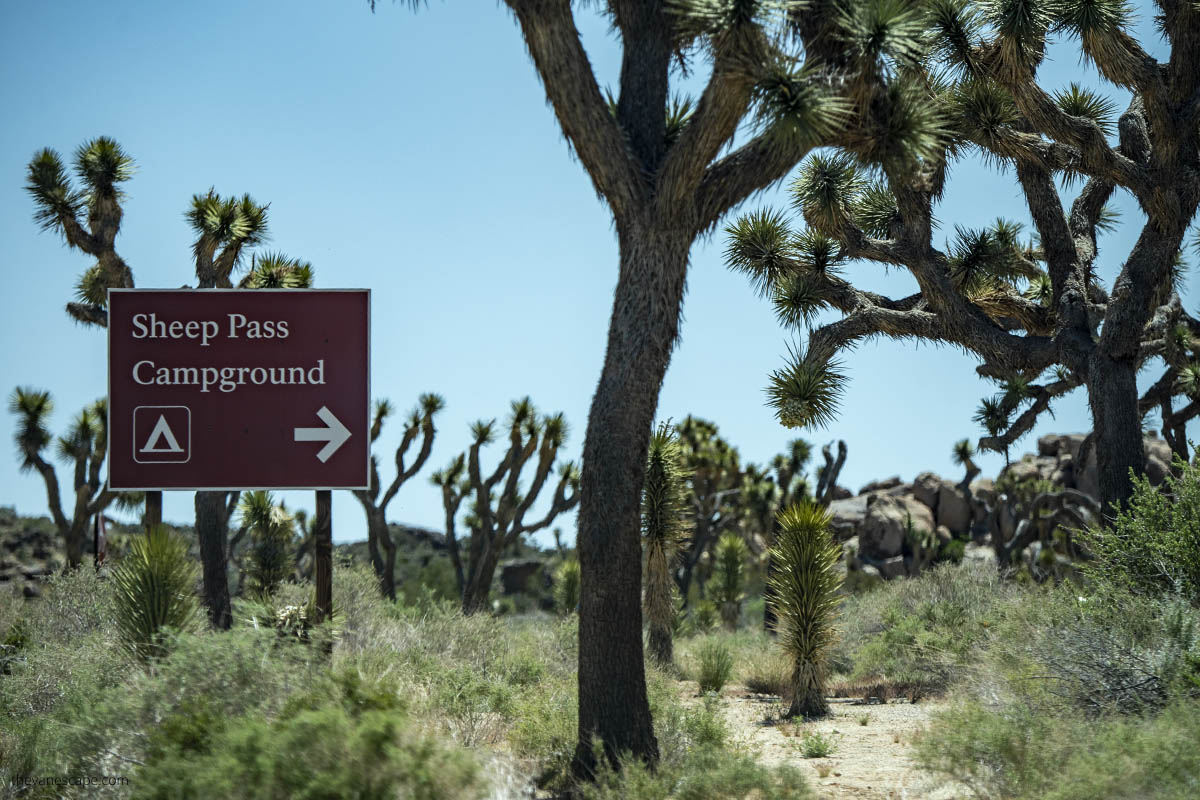
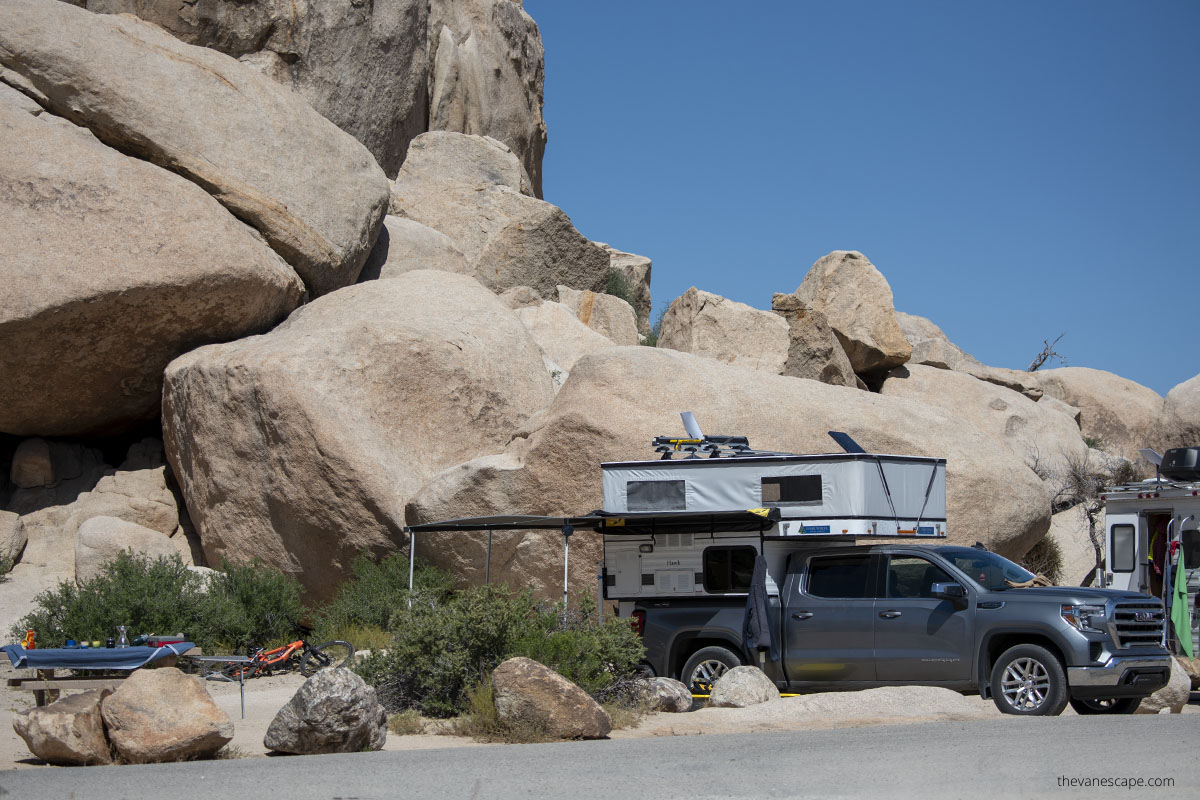
Rock Climbing and Bouldering
Joshua Tree is world-renowned for its rock climbing and bouldering opportunities. The park has over 8,000 climbing routes, making it a haven for climbers of all levels. Whether you’re a seasoned pro or a beginner looking to try something new, the park offers routes and guided experiences to suit everyone. Popular climbing spots include Hidden Valley, Intersection Rock, and Echo Cove.
Tip: If you’re new to climbing, consider booking a guided session to learn the basics and explore some of the best routes safely. Check out the Park rules before you go.
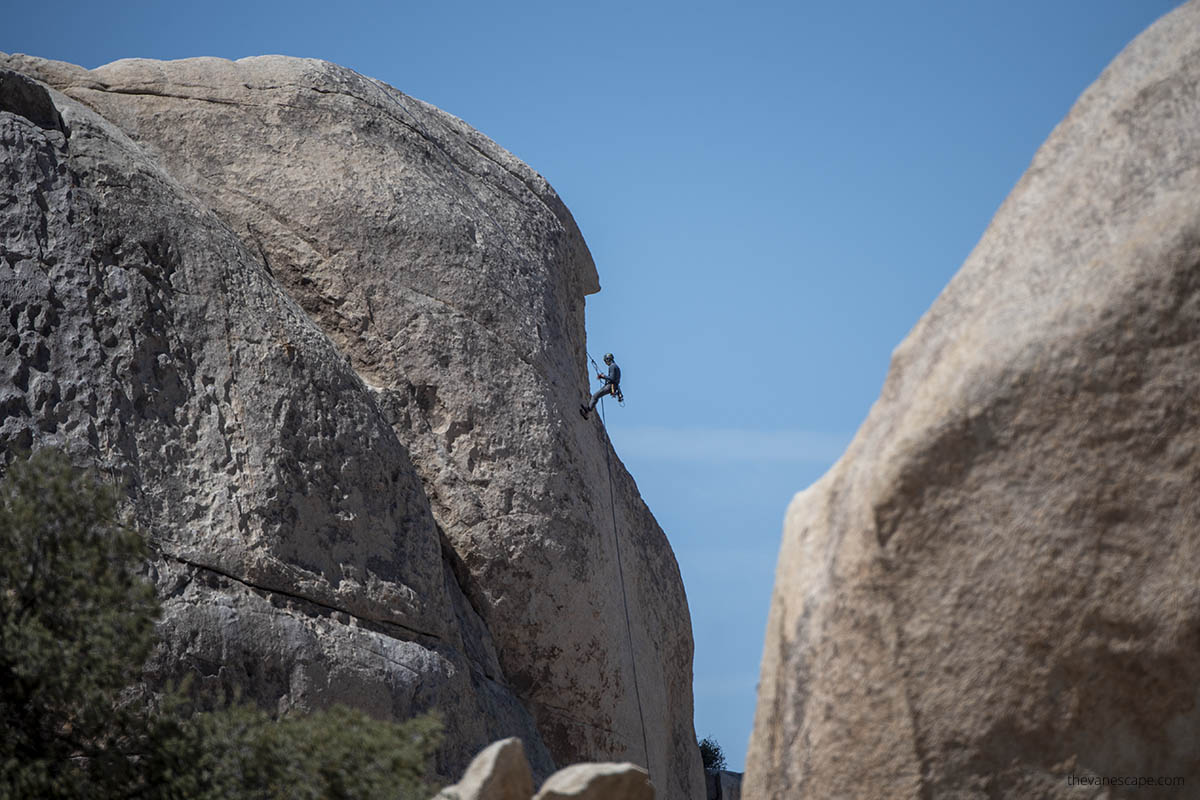
Exploring Joshua Tree Town and Pioneer Town
A short drive from the park, Pioneer Town is a former movie set that has been preserved as a living piece of Old West history. Originally built in the 1940s for Hollywood Westerns, it’s now a quirky destination where you can walk through old saloons, jailhouses, and general stores. It’s a fun detour that adds a historical twist to your Joshua Tree visit.
Tip: Visit on a weekend to catch live music at Pappy & Harriet’s, a popular venue in Pioneer Town known for its eclectic performances.
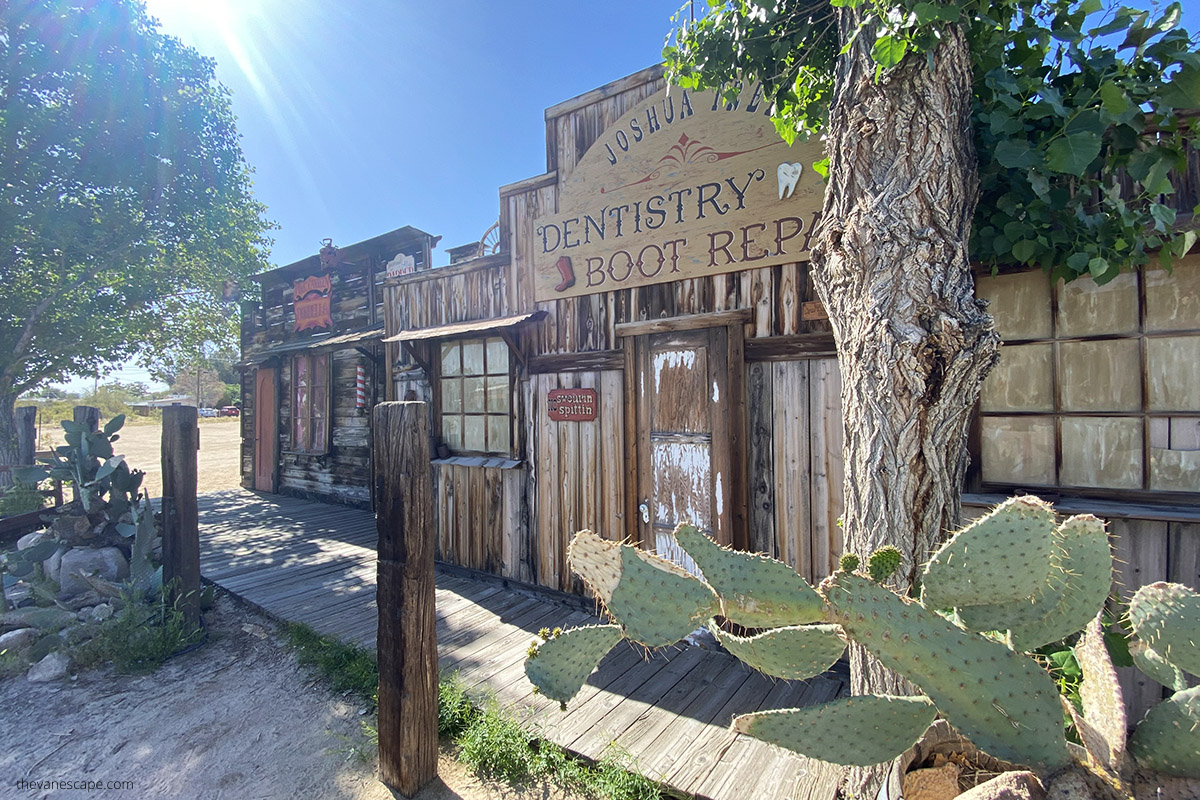
Photography Expeditions
With its dramatic landscapes, Joshua Tree is a photographer’s paradise. The unique Joshua trees, striking rock formations, and vast desert skies provide endless opportunities for capturing stunning images. Early mornings and late afternoons offer the best light for photography, casting a golden glow over the park’s features. Key spots for photography include Arch Rock, Skull Rock, and the Cholla Cactus Garden.
Tip: Plan your photography session for the most striking light conditions around sunrise or sunset.
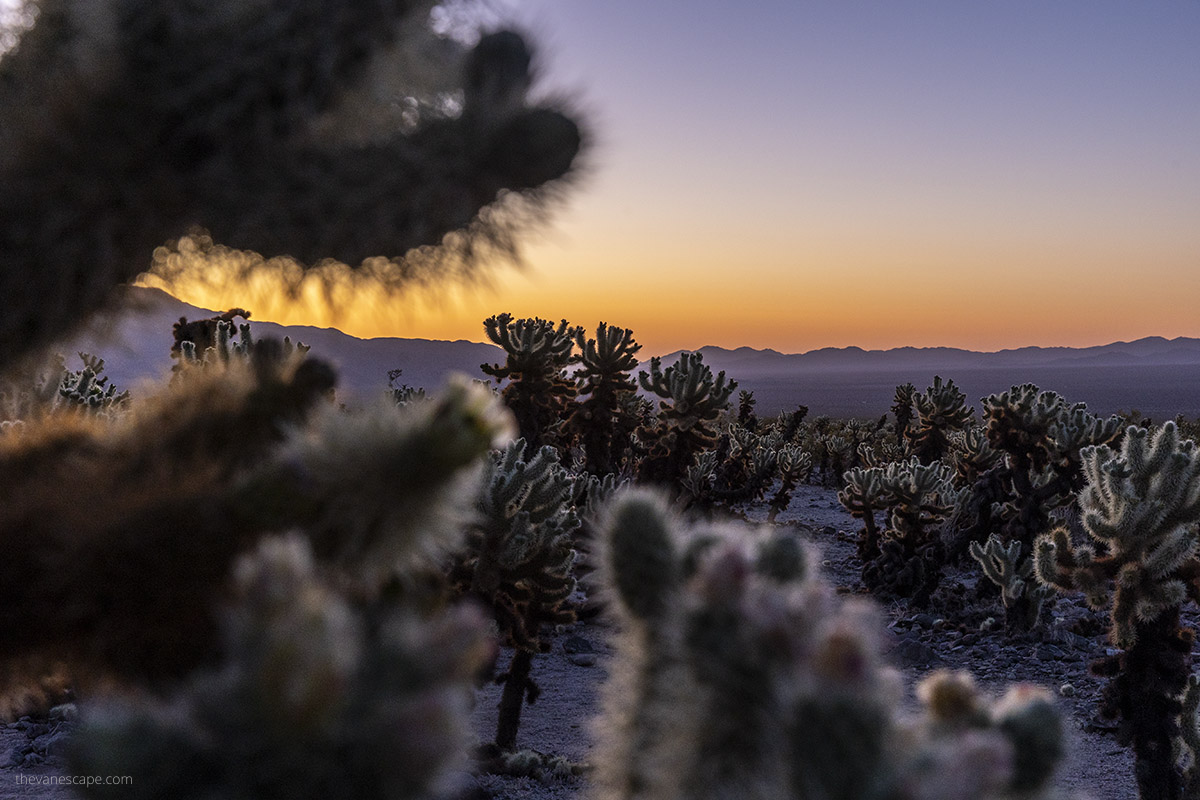
Scenic Drives in Joshua Tree National Park
Scenic drives are one of the best things to do in Joshua Tree National Park, especially during the hotter months when outdoor activities might be more challenging. These drives offer a chance to experience the park’s stunning landscapes from the comfort of your vehicle, with plenty of opportunities to stop and explore along the way.
Park Boulevard
Park Boulevard is the main road that winds through Joshua Tree National Park, connecting the north and west entrances. This scenic drive takes you through some of the park’s most iconic landscapes, including massive boulder formations, dense Joshua tree forests, and wide desert vistas. Along the way, you can stop at popular sites like Hidden Valley, Skull Rock, and the Keys View turnoff. The drive itself is about 20 miles long and takes roughly 45 minutes without stops, but you’ll want to allow extra time for exploration.
Tip: Start your drive early in the morning or late in the afternoon to avoid the midday heat and enjoy softer lighting for photography.
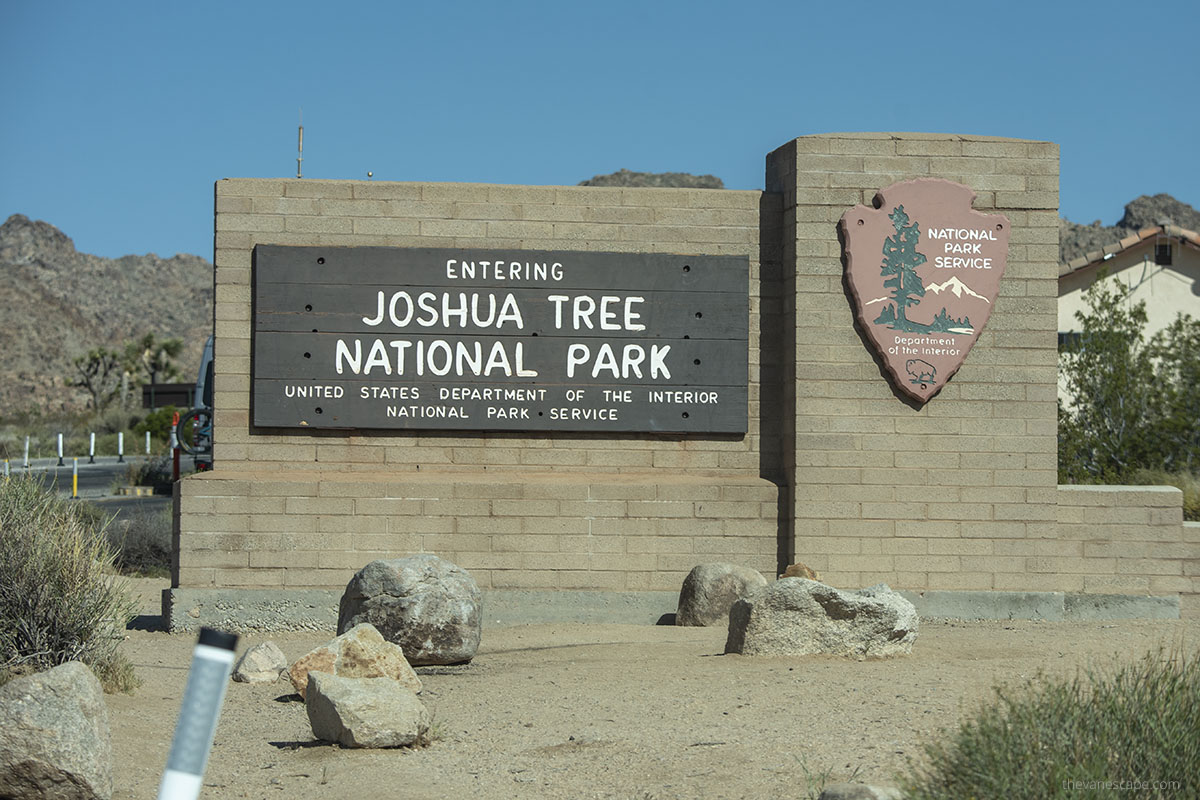
Keys View Road
Keys View Road is a short detour off Park Boulevard that leads to one of the highest points in the park—Keys View. The drive is about 5 miles long and offers incredible panoramic views of the Coachella Valley, the San Andreas Fault, and, on clear days, even Mexico. The road is well-paved, making it accessible to all vehicles, and the viewpoint at the end is the perfect spot to watch the sunset or simply take in the vastness of the desert landscape.
Tip: Bring binoculars to get a closer look at distant landmarks and geological features.
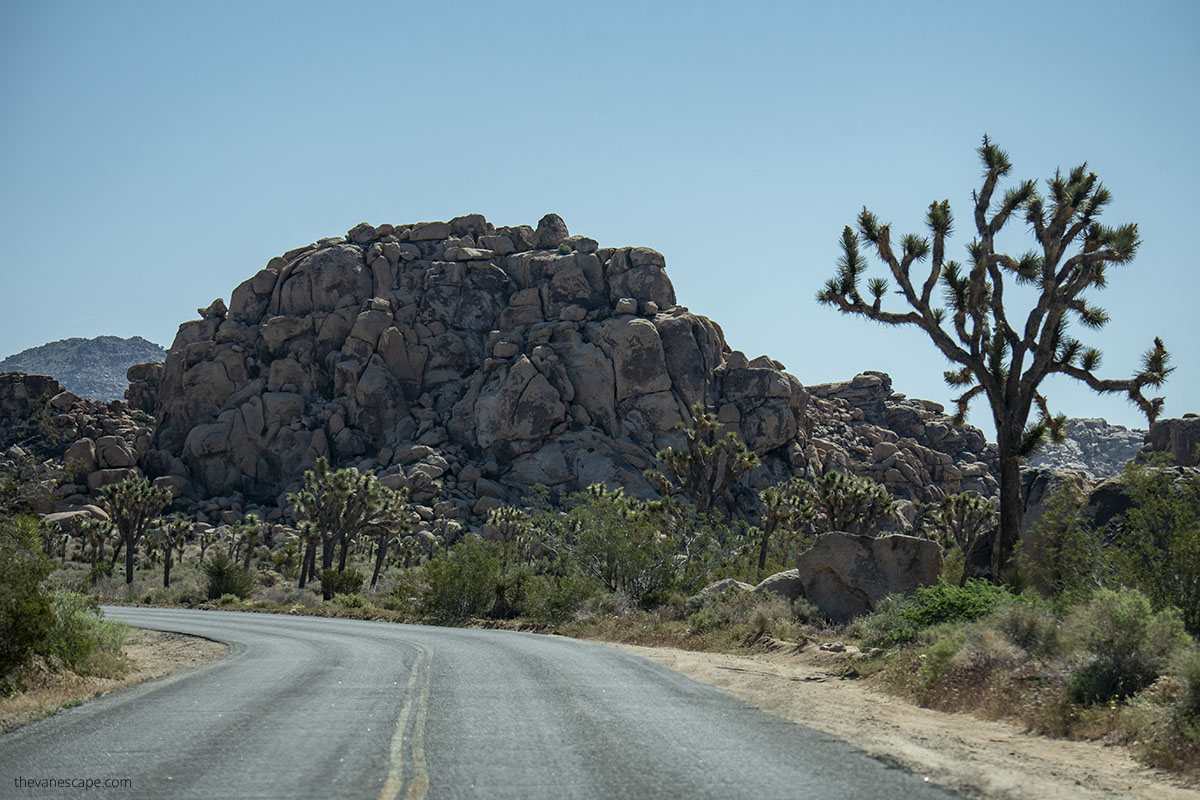
Pinto Basin Road
For those looking to explore the park’s southern regions, Pinto Basin Road offers a scenic drive through the heart of the Colorado Desert. This route takes you past the Cholla Cactus Garden, where you can stop and walk among the densely packed cacti, and the Ocotillo Patch, another area filled with unique desert plants. The drive continues south towards Cottonwood Spring, a lush oasis in the otherwise arid desert. This drive covers about 30 miles and can be completed in under an hour, but plan for extra time to stop and enjoy the scenery.
Tip: This drive is particularly beautiful in the spring when the wildflowers are in bloom, adding bursts of color to the desert landscape.
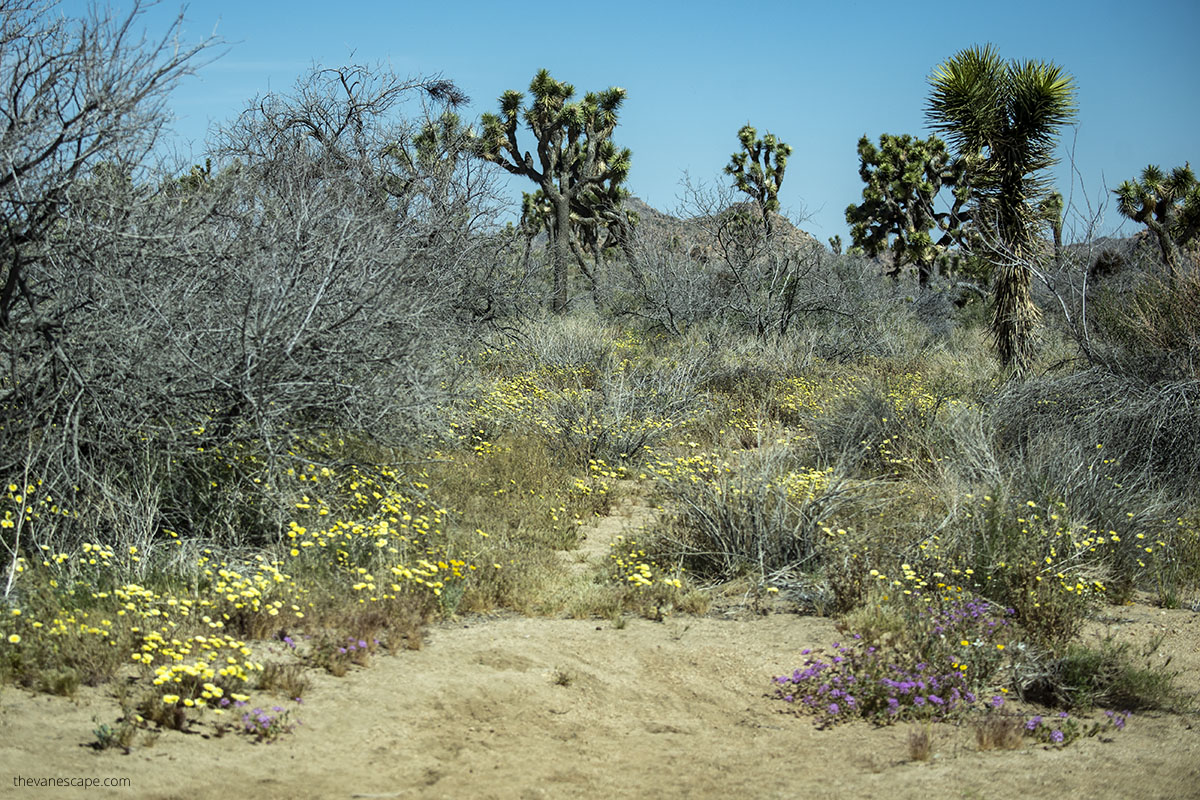
Geology Tour Road
Geology Tour Road is a more adventurous scenic drive that takes you off the main paved roads and into the park’s rugged backcountry. This 18-mile, one-way dirt road is best suited for high-clearance vehicles, though the first few miles are accessible to most cars. Along this route, you’ll see fascinating geological formations and enjoy a quieter, less-traveled experience of the park. The full drive takes about 2 hours, and there are several points along the way where you can stop to explore on foot.
Tip: Check road conditions at the visitor center before setting out, especially if there has been recent rain, as parts of the road can become impassable. If you like dirty roads, check out our tips for driving the Cathedral Valley loop in Capitol Reef National Park.
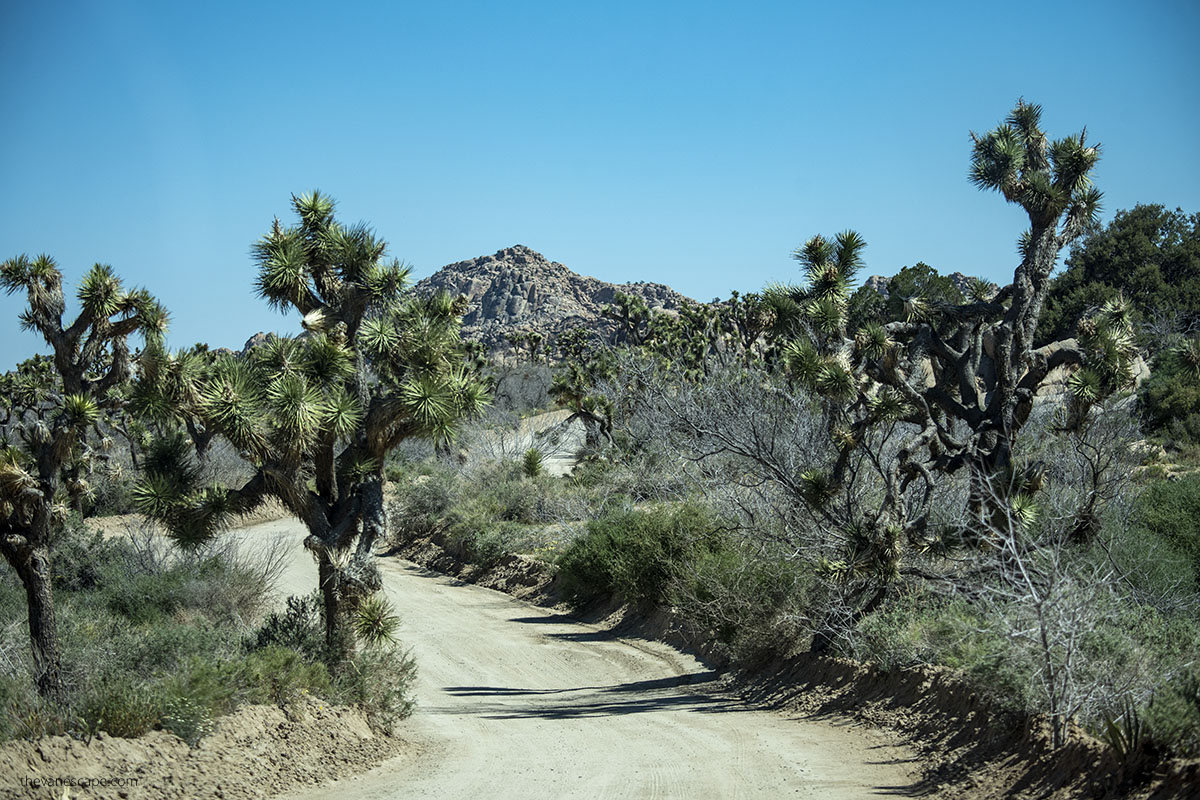
Exploring Joshua Tree’s Historic Sites
When planning things to do in Joshua Tree, exploring the park’s historic sites should be high on your list. Joshua Tree National Park is not only rich in natural beauty but also steeped in history. From old ranches to abandoned mines, these sites offer a fascinating glimpse into the past lives of those who once called this harsh desert home.
Keys Ranch
Keys Ranch is one of the most intriguing historic sites in Joshua Tree. This homestead was once the home of Bill and Frances Keys, pioneers who settled in the area in the early 1900s. The ranch includes the family’s house, a schoolhouse, a workshop, and various farming and mining equipment. Today, it’s a preserved piece of history that can only be visited on a ranger-led tour. These tours provide insight into the challenges of desert living and the resourcefulness of the Keys family.
Tip: Tours are popular and space is limited, so book your spot in advance through the park’s website.
Lost Horse Mine
Another must-see historic site in Joshua Tree is the Lost Horse Mine. This mine was one of the most successful gold mines in the region during its operation. The 4-mile round trip hike to the mine offers not only a look at the well-preserved remnants of the mining operation but also stunning views of the surrounding desert. The trail is moderately challenging, with some elevation gain, but it’s well worth the effort for both history buffs and hiking enthusiasts.
Tip: Start your hike early in the day to avoid the heat, and take time to explore the area around the mine, where you can find other remnants of the mining era.
Barker Dam
Barker Dam is a historic site that combines natural beauty with a touch of history. Built in the early 1900s by cattle ranchers, the dam was used to store water for livestock. Today, it’s a peaceful spot where you can often see water, even in the arid desert environment. The easy 1.3-mile loop trail around the dam also features petroglyphs, ancient rock art left by Native Americans who once inhabited the area.
Tip: Visit Barker Dam in the morning or late afternoon when the light is best for viewing and photographing the petroglyphs.
Wonderland Ranch (The Wall Street Mill)
The Wall Street Mill, located near Wonderland Ranch, is another historic site worth exploring. This gold ore crushing site, built by Bill Keys, was operational until the 1960s and is now a preserved relic of the park’s mining history. The area around the mill also includes the ruins of Wonderland Ranch, an old homestead. The trail to the mill is a 2.4-mile round trip, easy and flat, making it accessible for most visitors.
Tip: Bring a camera to capture the rusting machinery and structures, which make for interesting and unique photo subjects.
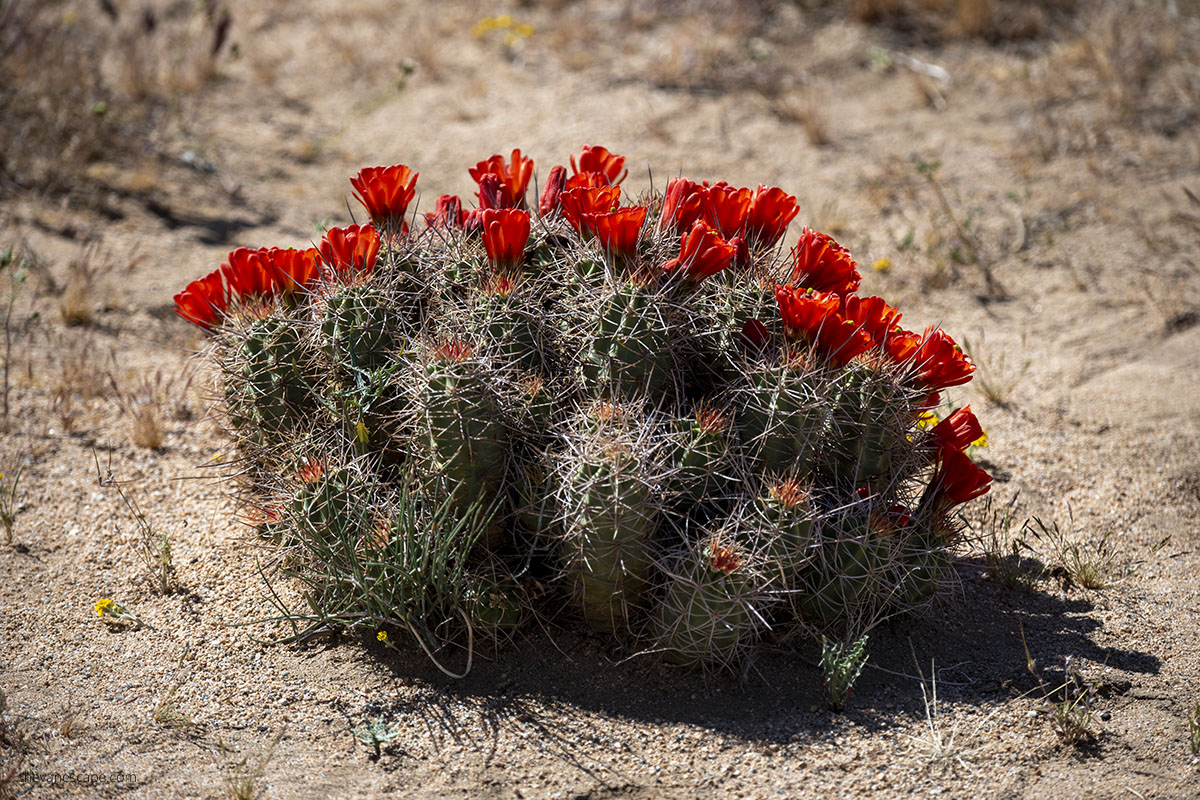
Wildlife Watching and Birding
Joshua Tree National Park is a haven for those interested in wildlife watching and birding or wildlife photography. The park’s diverse habitats support various species, making it an excellent destination for observing desert wildlife in its natural environment.
Birds of Joshua Tree
With over 250 species of birds recorded, Joshua Tree is a birdwatcher’s paradise. Common sightings include the Greater Roadrunner, known for its long tail and quick movements, and the vibrant Vermilion Flycatcher, easily spotted by its bright red feathers. Other notable birds include the California Thrasher, with its distinctive curved beak, and the Western Scrub-Jay, often seen among the park’s iconic Joshua trees.
Tip: Early mornings during spring and fall migrations offer the best birding opportunities, as many species are more active and visible.
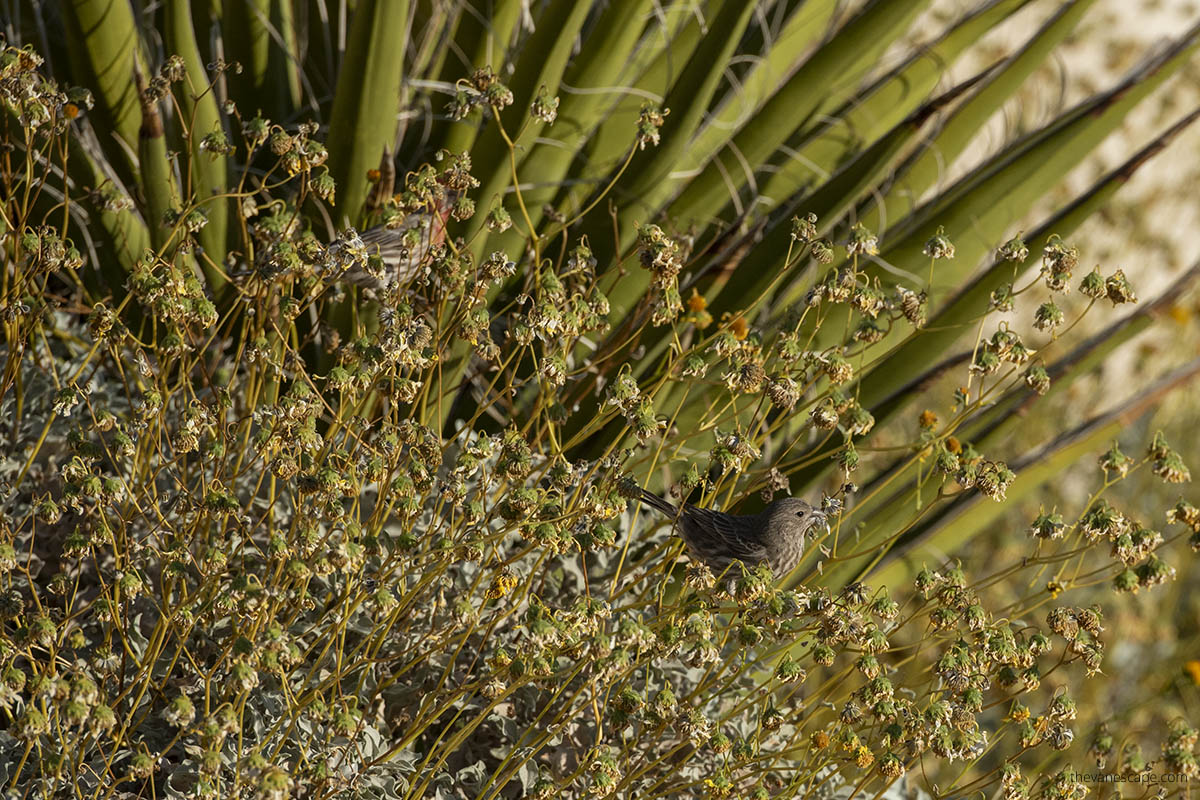
Mammals of the Desert
The park’s desert environment is home to a variety of mammals. Black-tailed jackrabbits, desert cottontails, and coyotes are frequently seen, especially in the early morning or late afternoon. Bighorn sheep, while more elusive, can sometimes be spotted in the higher, rocky regions of the park.
Tip: Use binoculars to get a closer look at wildlife while keeping a safe distance to avoid disturbing them.
Reptiles and Amphibians
Reptiles thrive in Joshua Tree’s arid climate. Look out for the desert tortoise, a protected species that can be seen slowly moving through the park, and the desert spiny lizard, often basking on rocks. The park is also home to the Mojave rattlesnake, so be mindful of your surroundings, especially when hiking on less-traveled paths.
Tip: Reptiles are most active in the early morning and late afternoon when temperatures are moderate.
Best Spots for Wildlife Watching
Certain areas of Joshua Tree are particularly rich in wildlife. The Barker Dam area is one of the best spots for birding, especially in spring when the dam may still hold water. Cottonwood Spring is another excellent location, known for attracting both birds and other wildlife due to its oasis-like environment.
Tip: Bring a field guide or use a birding app to help identify the various species you encounter.
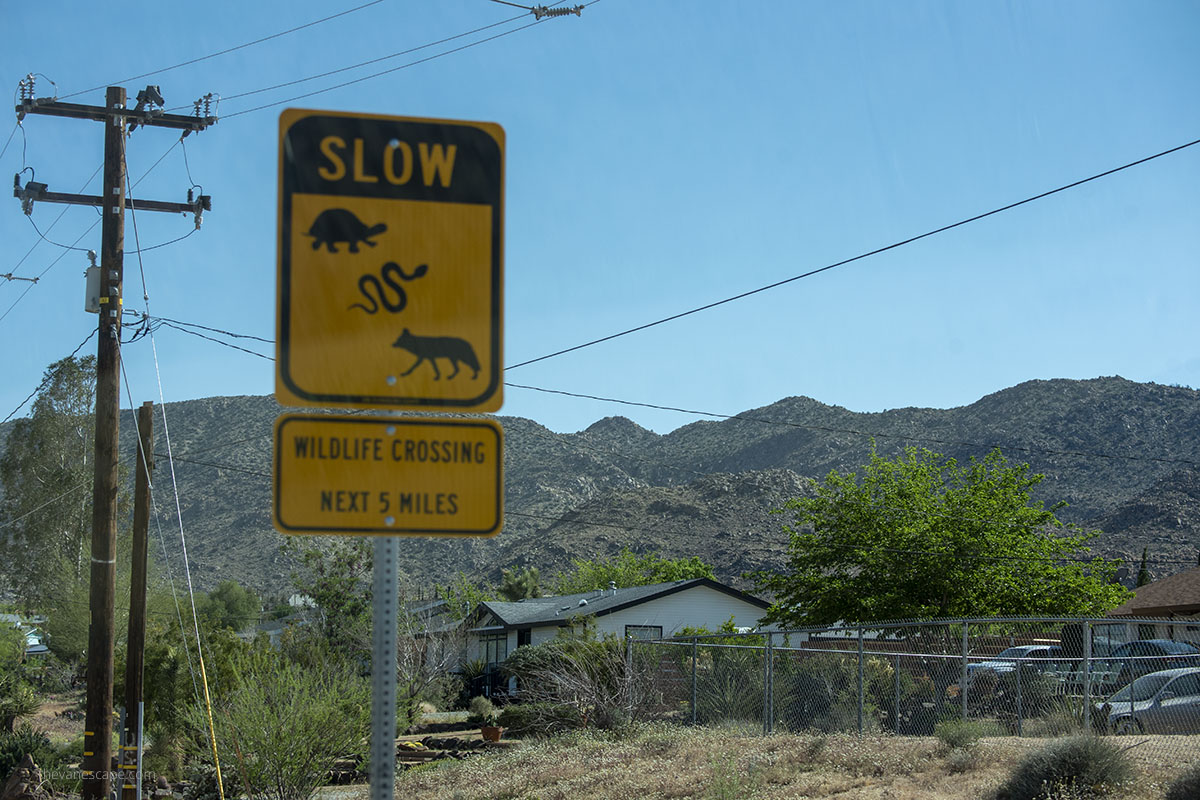
Photography Hotspots in Joshua Tree
One of the best things to do in Joshua Tree is capturing its breathtaking landscapes through photography. The park’s unique combination of rugged rock formations, iconic Joshua trees, and vast desert skies makes it a photographer’s dream. Whether you’re a professional or just enjoy taking pictures, these hotspots are perfect for capturing the essence of Joshua Tree.
Cholla Cactus Garden
The Cholla Cactus Garden is a must-visit for photographers. This area is filled with densely packed cholla cacti, which catch the light beautifully, especially during sunrise and sunset. The golden hour is when the cacti seem to glow, creating a magical and surreal atmosphere. It’s an ideal spot for macro photography or wide-angle shots that highlight the garden’s expanse.
Tip: Arrive just before sunrise to capture the first light of the day illuminating the cacti.
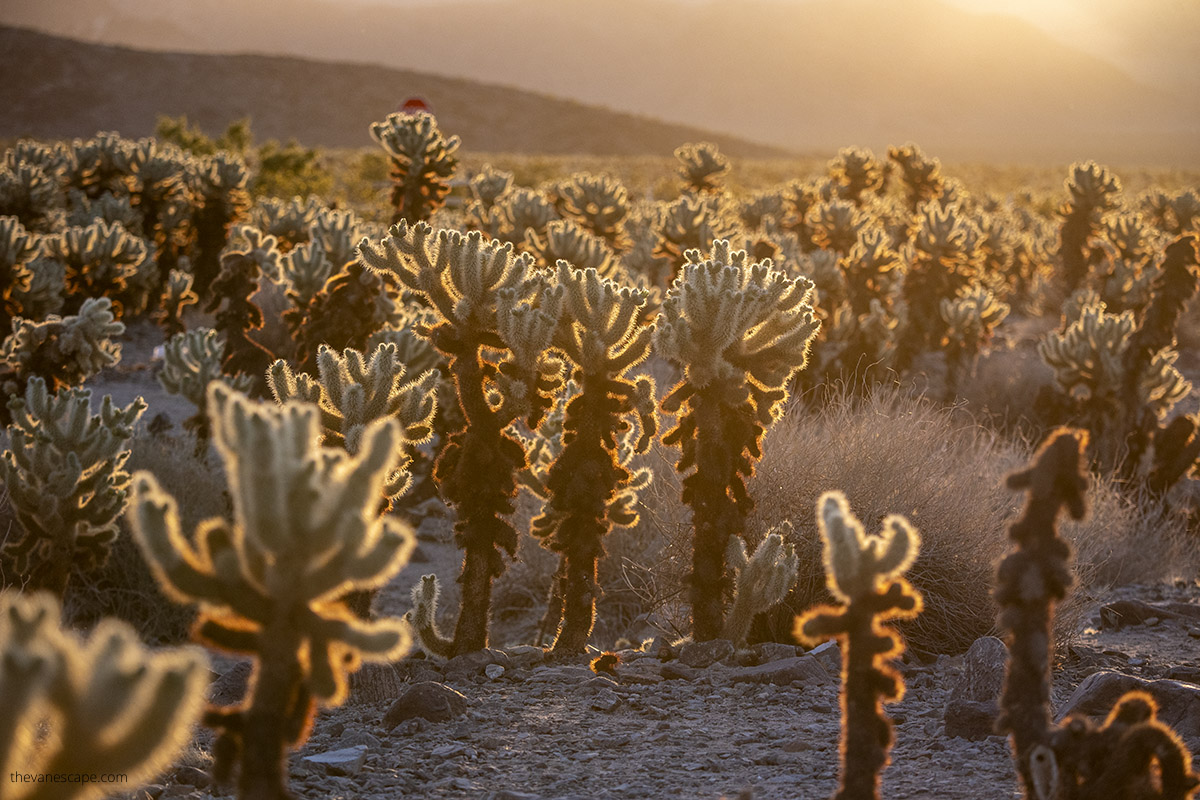
Arch Rock
Arch Rock is one of the most photographed spots in Joshua Tree. This natural rock arch, located on a short trail near White Tank Campground, offers dramatic photo opportunities. The arch itself is a perfect subject, but the surrounding rock formations also provide great angles for capturing the unique landscape. Early morning or late afternoon light adds depth and texture to your photos.
Tip: Bring a wide-angle lens to capture the full scale of Arch Rock and the surrounding landscape. Make sure to find and photograph Heart Rock.
Keys View
For panoramic landscape photography, Keys View is unmatched. This viewpoint offers sweeping views of the Coachella Valley, the San Andreas Fault, and on clear days, you can even see as far as Mexico. The sunsets here are particularly stunning, with the desert landscape bathed in warm, golden light.
Tip: Visit during sunset for dramatic lighting and vivid colors across the horizon.
Skull Rock
Skull Rock is another iconic location, easily accessible from the main road. The rock’s skull-like appearance is striking and makes for a unique photo subject. The area around Skull Rock is also filled with large boulders, offering plenty of opportunities for creative compositions.
Tip: Experiment with different angles to make the most of the rock’s unusual shape.
Hidden Valley
Hidden Valley is not only a great hiking spot but also a fantastic location for photography. The massive boulders, towering Joshua trees, and the enclosed valley create a stunning natural amphitheater. The light in Hidden Valley changes dramatically throughout the day, offering a variety of photographic opportunities.
Tip: Visit in the late afternoon when the low sun casts long shadows, adding depth to your images.
Joshua Trees at Sunrise or Sunset
Of course, no photography trip to Joshua Tree would be complete without capturing its namesake trees. The best time to photograph Joshua trees is during sunrise or sunset when the soft light accentuates their twisted branches and spiky leaves. The contrast between the trees and the colorful sky creates iconic desert images.
Tip: Scout your location during the day to find a composition you like, then return at golden hour for the perfect shot.
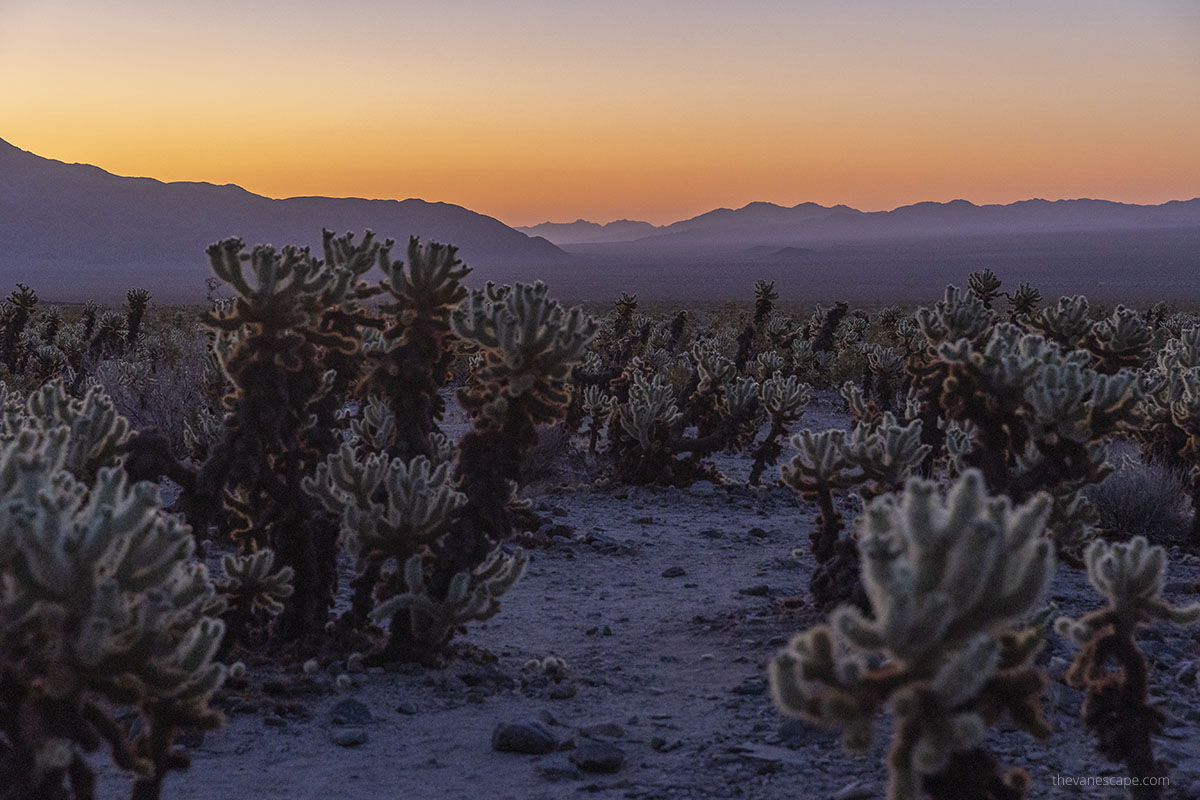
Final Thoughts: Our Top Five Things To Do In Joshua Tree
Joshua Tree National Park is a place of endless discovery, offering a variety of experiences that cater to different interests. If you’re planning a visit, here are the top five things to do that should be at the top of your list:
- Hike to Ryan Mountain: This moderately challenging hike rewards you with 360-degree views of the park. It’s a perfect way to get a feel for the vastness of Joshua Tree’s landscape.
- Explore Hidden Valley: This short, easy hike takes you into a stunning area surrounded by massive boulders and rich plant life. It’s one of the park’s most popular spots for hiking and rock climbing.
- Visit Skull Rock: Easily accessible from the road, Skull Rock is one of the park’s most iconic landmarks. It’s a great photography spot and offers nearby rock scrambling opportunities.
- Watch the Sunrise at Cholla Cactus Garden: Start your day with the magical sight of the Cholla Cactus Garden bathed in the soft light of dawn. The cacti seem to glow, making it one of the most photogenic spots in the park.
- Take in the View from Keys View: Drive up to Keys View for a breathtaking panorama of the Coachella Valley, the San Andreas Fault, and even Mexico on a clear day. It’s an ideal spot for sunset or simply soaking in the vast desert.
These highlights showcase Joshua Tree’s diversity and beauty, making your visit truly memorable. Whether you’re seeking adventure and tranquility or want to experience the unique desert landscape, these activities offer the best of what Joshua Tree National Park offers. Enjoy your journey through this remarkable natural wonder!
Do You Like It? Pin It For Later!

